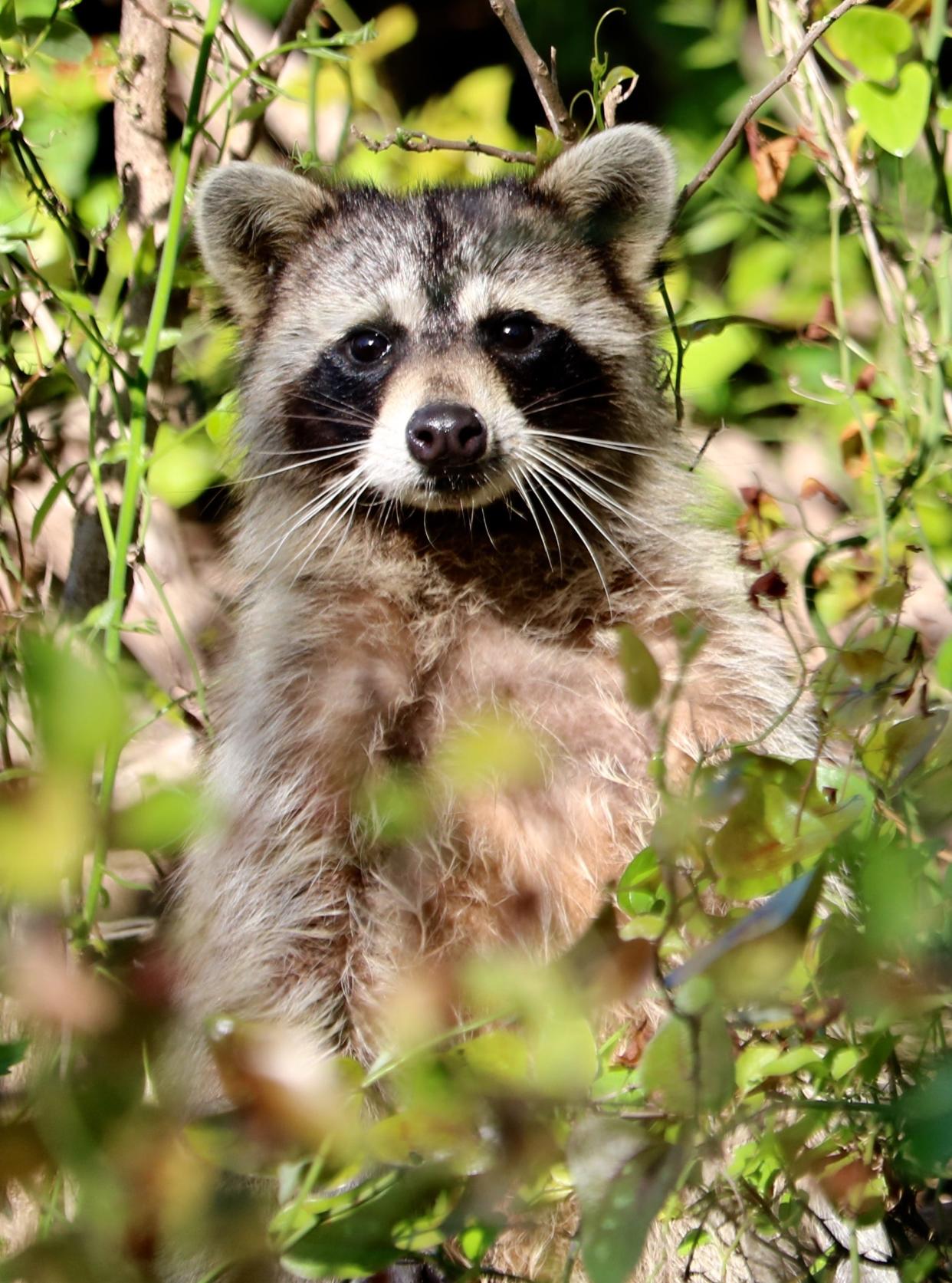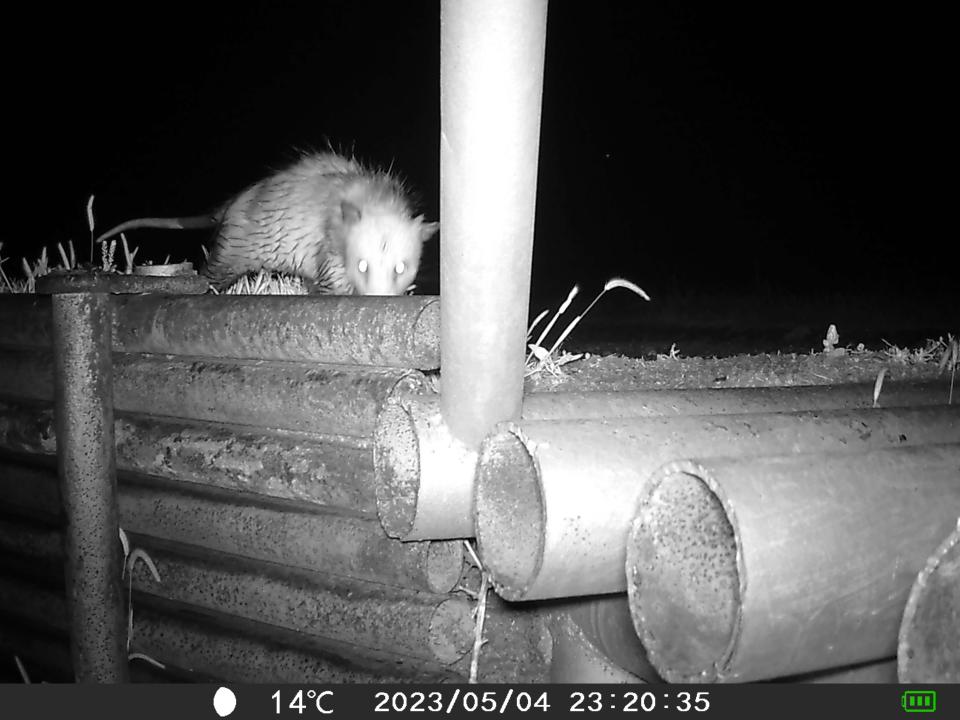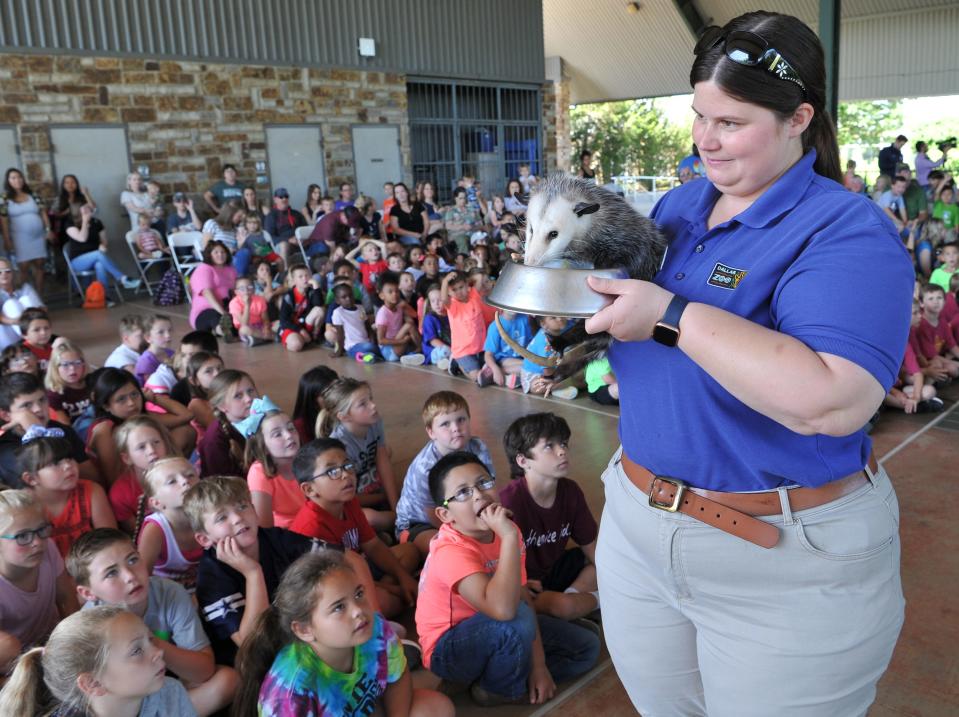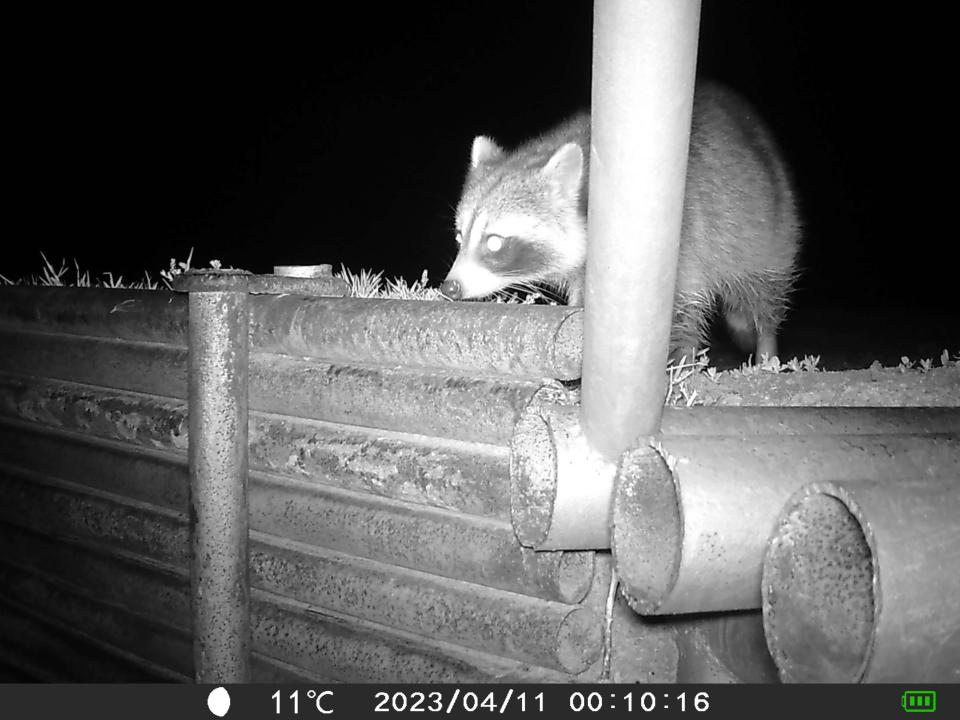Living the city life: These two mammals adapted to urban environment

Although many wild mammals tend to lead secretive lives and are rarely seen, nature always provides exceptions! There are several species which have learned to live quite successfully around humans and have consequently increased in abundance and expanded their ranges throughout our area and all of Texas and Oklahoma. Indeed, two mid-sized, omnivorous (eats both plant and animal matter) mammals are very familiar to most of us and are often seen during crepuscular and nighttime hours.

Virginia Opossum
The first of these widespread mammals we will discuss is the Virginia Opossum. Although many people may have rather low opinions of "possums" (as they are commonly known), these versatile and successful animals are the only native marsupials found in the United States and were once sought for their fur and meat. Historically, the Virginia Opossum was the third most harvested fur-bearing animal in Texas. Adult Virginia Opossums are approximately the size of small terrier dogs and have an unmistakable appearance. Their fur is long, course, and generally gray to white and they have rather short, round-tipped, leathery, black ears. The basal part of the tail and fur of the legs are black. A distinguishing characteristic of the Virginia Opossum is its long, scaly and naked, prehensile tail which is used very effectively when the opossum is climbing and moving through tree branches, on and across fences, and on buildings and other structures. Five toes are present on its feet. =The front feet appear very similar to small hands (with opposable thumbs) and even the back feet have opposable great toes: all of which also aids in climbing. The head and face are usually white and the snout is long and pointy.

The Virginia Opossum occurs throughout our region in woodlands, mesquite pastures, riparian habitats along streams and rivers, prairie and farmland areas, and even within parks, walking and biking trails, and other habitats within our cities and towns. Opossums are nocturnal foragers and feed upon a wide variety of items. Food items include insects, earthworms, rodents, ground-nesting birds and bird eggs, amphibians, small reptiles, and snakes. Opossums’ diets also include various nuts and fruits, grasses, seeds, tubers, and other vegetation and vegetable matter. The reputation of opossums as poultry killers may be somewhat exaggerated but they are known to catch waterfowl and small ground-nesting birds. Opossums do not hibernate and are active throughout the year. During exceptionally cold weather, the Virginia Opossum survives on stored body fat and may remain within a den situated in a hollow tree, brush pile, the prior-excavated ground dens of other animals, underneath a building or other structures, and/or in an attic or loft.
On a personal note, I remember being awoken on several occasions by ruckuses occurring between opossums and our farm cats or dogs as the opossums were attempting to raid the food bowls of the cats and dogs! No fatalities were ever observed between the combatants; but I did see the opossums demonstrate their famous habit of "playing dead" in order to end the conflict! This particular survival behavior seemed to be effective because the opossum was always "missing" the next morning. Opossums will hiss loudly and gape their mouths whenever threatened; but they are generally shy and timid animals and will usually only bite as a last defense. A not-so-useful survival behavior is the Virginia Opossums’ habit of freezing in place whenever illuminated. This behavior results in many animals being struck by vehicles as the opossums are attempting to cross roadways.
Among the most unusual characteristics of the Virginia Opossum are its reproduction and development. The Virginia Opossum’s reproductive season extends from January through July with two litters of six to nine young born during winter and late spring months. Unique among North American mammals, both male and female Virginia Opossums have bifurcated (= forked) reproductive parts. Also, similar to many of its Australian marsupial relatives, females carry their newborn in an abdominal pouch (called the marsupium) for approximately 60 days after their birth! The young opossums are very underdeveloped at birth; but are capable of crawling to their mother’s pouch, attaching to one of her teats, and nursing upon milk as they complete their early development and growth! After exiting the pouch, the young opossums are carried "piggyback" by their mothers until capable of independently foraging for food. Opossums are not very long lived (2 -3 years) and their many predators include coyotes, dogs, bobcats, owls, hawks, and large snakes. Conversely, the Virginia Opossum seems to have developed some immunity to the venom of Pit Vipers and also is somewhat resistant to the Rabies virus!
Northern Raccoon
Another often sighted, climbing acrobat common to our area is the Northern Raccoon. These familiar mammals are somewhat larger than the aforementioned Virginia Opossum and have a more robust body shape with long, grizzled, fur varying from gray to almost black and mixed with red at the nape of the neck. Two unmistakable characteristics of the Northern Raccoon are its black facial mask and its ringed tail of alternating black and tan (sometimes white or gray) bands ending in a black tip. All its feet have five toes and the front feet are specialized and adept for grasping objects and manipulating food. The ears are relatively short and rounded and are black to dark gray in color with white edges. Large adults may weigh close to 30 pounds and up to 50% of their weight may be due to stored body fat!

The Northern Raccoon is a very successful habitat generalist and occurs throughout our region in a wide range of habitats, including farmlands, woodlands, riparian habitats, prairie margins, city parks and playgrounds, walking and biking trails, city dumps, and many other areas with available water. Dead or hollow trees, brush piles, rocky ledges, abandoned barns, buildings, and even attics are utilized as den sites. Raccoons are excellent climbers and swimmers and can escape some potential predators by running away. When hard pressed by a predator, raccoons will usually find a suitable tree to climb or jump into a nearby pond, stream, river or lake in order to escape by swimming. Although not normally aggressive, a cornered raccoon or a mother with young may also choose to stand its ground and fight! Predators of the Northern Raccoon include bobcats, coyotes, owls and humans (raccoons are the most economically important furbearers in Texas).
Raccoons are nocturnal foragers and opportunistic omnivores with very broad diets including many kinds of animal and plant matter. Raccoons are more selective when food resources are abundant and less so as food becomes scarce. Diet items include insects, crayfish, mussels, small fishes, bird eggs, carrion, seasonal fruits and nuts (such as prickly pear fruits) and various grains. Personally, I remember one instance where a raccoon climbed into an open grain bin and settled down to eat a meal of wheat! Raccoons adapted to urban areas are famous raiders of garbage cans and dumpsters. Raccoons are known to make rapid, straight-line trips between their dens and preferred foraging areas, thus indicating that raccoons explore and learn their areas of residence and adapt to changing conditions and environments.
The Northern Raccoon’s mating season extends from February to June and results in a single litter of three to seven young raccoons called cubs. Male raccoons are polygamous and expand their ranges during the mating season but, after mating, mother raccoons are solely responsible for raising the young cubs. Cubs remain in their den and nurse for approximately 70 days and first venture out with their mother within approximately three months. The young become more independent as they grow; however, siblings and their mother may still den and forage together for some time. Raccoons remain in their dens during extended periods of extreme cold weather and rely upon their stored body fat for nourishment and warmth.
Even though both are nocturnal, chances of observing opossums and raccoons are still excellent because they live in many different habitats and have adapted well to city life. Just remember to tightly close your garbage cans and garages and, otherwise, enjoy the show! These two entertaining acrobats are amusing performers under the right circumstances.
Jim Goetze is a retired professor of biology and former chairperson of the Natural Sciences Department of Laredo College with an avid interest in all aspects of the natural world. He can be contacted at gonorthtxnature@gmail.com
This article originally appeared on Wichita Falls Times Record News: Living the city life: These two mammals adapted to urban environment

